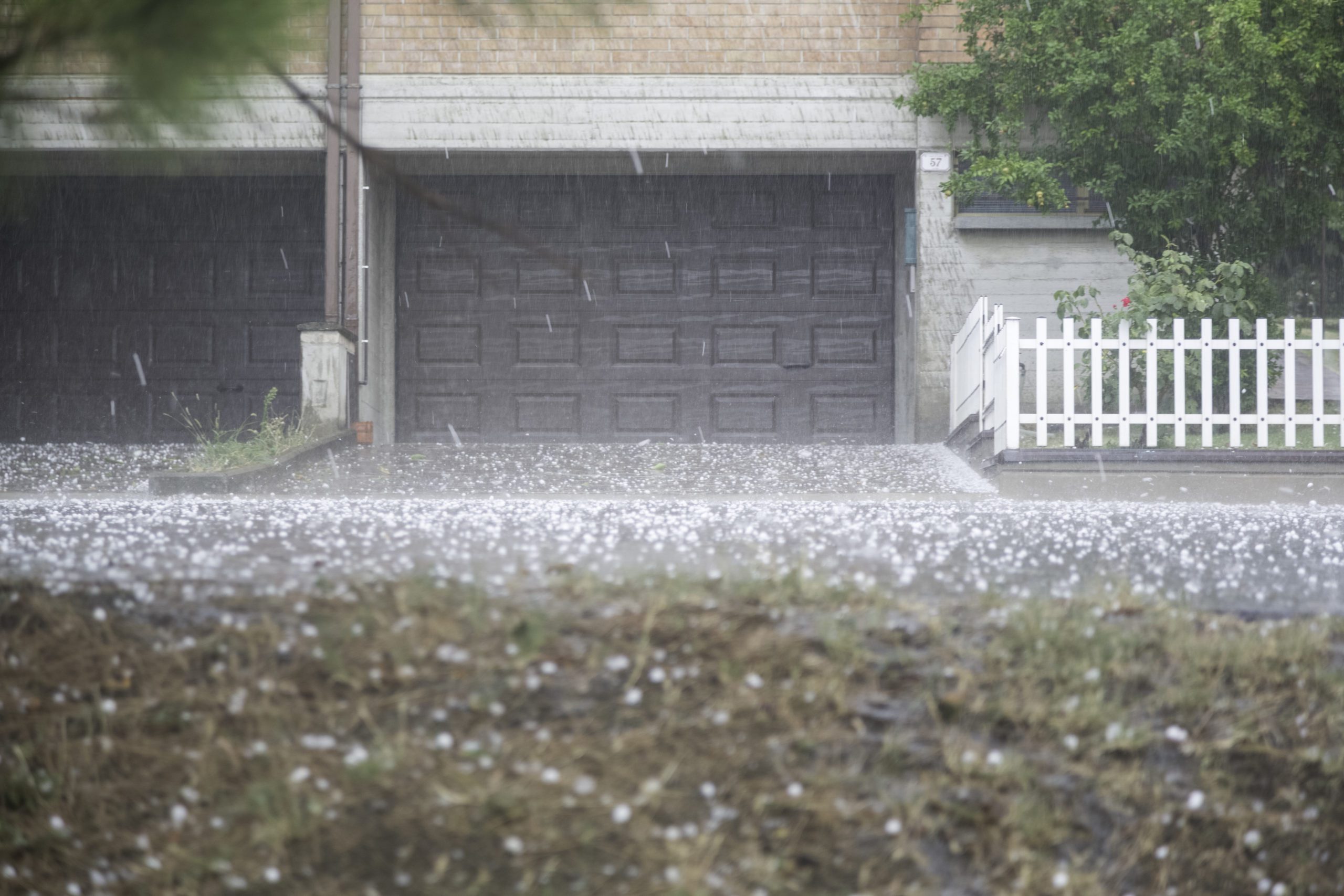Hail can be a menace. It can take a major toll on your roofing and siding – especially in a state with so much of it like Colorado. After a hail storm, the first step before even considering filing a claim is to visually inspect your roof. However, hail damage can be hard to spot sometimes.
If you’re worried that your home has been affected by hail damage, read on to find out ways to spot hail damage on your roof and how to file a claim once you identify the damage.
Signs Your Roof Has Been Damaged by Hail
Hail damage isn’t easy to spot on roofing materials. But the effects of unaddressed damage can be devastating. Hail can loosen shingles, weaken sealing strips, and even lead to water damage. Although there aren’t many easy ways for the untrained eye to spot damage on the roof itself, there are other ways to deduce if your roof is damaged or not. Here are some signs of roof hail damage.
- Dings on your gutters and downspouts. If these parts of your home are damaged, chances are so is the roof.
- Clogged and overflowing gutters. This could mean mineral granules from the shingles were knocked loose.
- Damaged siding. If the hail was powerful enough to damage the house’s siding, it likely also affected the roof.
- Loose shingles. It’s a surefire sign of roof damage if you find any remnants of shingles laying around your home.
5 Steps to Filing a Roof Hail Damage Insurance Claim
When you notice any of the signs above, you’ll want to take action as soon as possible. Whether it’s minimal cosmetic damage or more serious destruction leaving your home vulnerable to roof leaks, filing an insurance claim is preferred. But what does that process look like? Here are 5 steps on how to file an insurance claim for your roof after hail damage.
1. Locate your homeowner’s insurance policy.
Before you do anything, locate your homeowner’s insurance policy. You should always keep this somewhere safe. If you can’t find the documentation, you can reach out to your insurance agent to request a copy before filing a claim. Once you have the documents to review, make a note of your insurance policy number and deductible—you’ll need these later.
2. Take notes and photos of the damage.
Next, take time to visually inspect the area. Take photos of any damage and make note of what needs to be repaired. Write down the exact time of the storm and what type of storm occurred. These notes and photos will serve as great assets to you as you move forward with the claims process. You can even save a piece of the hail as soon as the storm passes and keep it frozen for even more evidence.
Please note that climbing up on the roof to inspect is dangerous—we do not suggest that you inspect on your own without proper safety gear and experience. Always practice safety first.
3. Have a roofer or home restoration company in mind.
Do you need help determining whether you actually have hail damage on your roof? Contact a reputable, local roofing company to learn more about how their roof inspection process works. You’ll also want to ask about roof repair pricing and experience. If you have a roofer in mind, you will be less likely to get stuck with a roofer chosen for you by the insurance company. These prearranged agreements don’t always offer the most dependable or customer-friendly contractors to work with.
4. Call your homeowner’s insurance claim number to report.
Once you know what happened, how it happened, and what you’re going to do to fix it, call your insurance company. Just don’t wait too long to report. Some insurance companies may take issue with your claim if it’s not reported in a timely manner. During this call, you’ll want to have the following information readily available: your insurance policy number, the date and time of the storm, the size of the hail size (if you were able to salvage a piece), and photo or video evidence of the damage.
5. Schedule a time for the claims adjuster to inspect.
After you make the initial call to report the damage, you’ll speak with the claim examiner. This person will schedule a time for the claims adjuster to inspect your roof. It can also be beneficial to your case to send along any of the photos and videos you took at the time of the storm for the examiner to consider. These individuals will work to find evidence and prove authenticity to better support your claim.
Once the claims adjuster takes over, the next step will be an official roof inspection. While this takes place, they will put together a repair estimate for you to review and the restoration process can begin.
Hire a Local Roofing Contractor Who’s Prepared
At 970 Services, we understand your family’s situation and aim to make it right every step of the way. Has your roof experienced hail damage? Have shingles disappeared after a late-summer storm? We are the #1 roof replacement and restoration company in Northern Colorado. We are also hail damage specialists. We’ll confront your insurance company to get you the help you deserve. For an up-to-date quote, contact our team by phone at (970) 888-0970 or online here.

